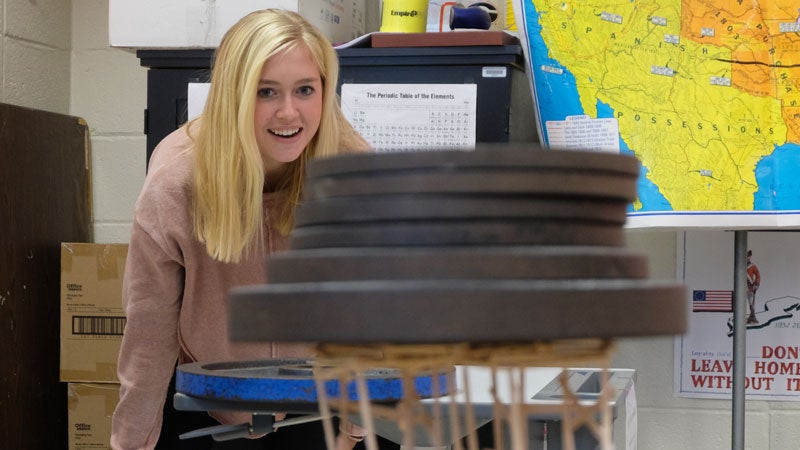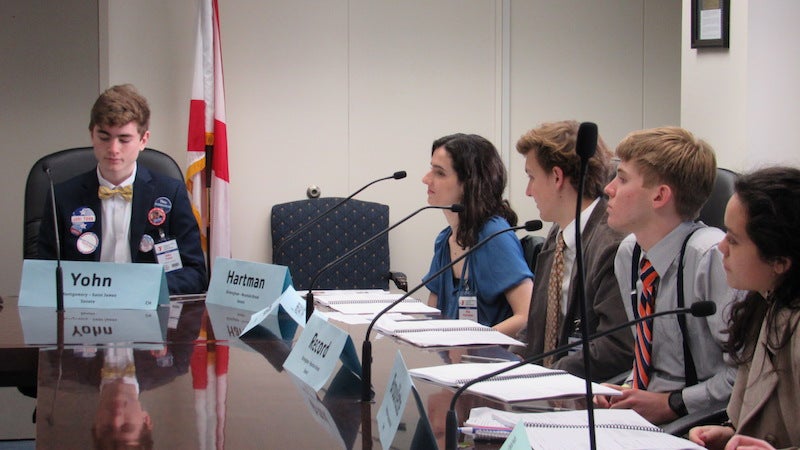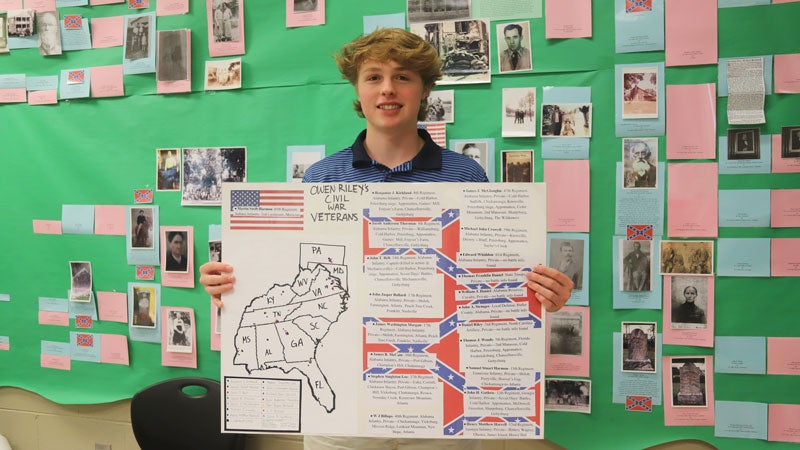“Please, please, please hold,” whispers Laurel Hand as she watches her prized possession of the moment, a toothpick structure. As the Mountain Brook High School sophomore and her two partners look on with nervous energy, they breathe a sigh of relief when the 55-pound weight holds on top of it.
Shane Martin’s Toothpick Challenge isn’t really about the weight though—at least not literally. It’s more about the 1787 Philadelphia Constitutional Convention. And that requires more explanation, right?
As a hands-on learner himself, Martin, a history teacher, wanted to engage the students who may be more kinesthetically inclined rather than auditory, so he decided on a building project that requires students to construct a tri-based structure that can hold at least 35 pounds. “The catch,” Martin says, “is they have to build it with nothing but toothpicks, Elmer’s glue and their creativity.”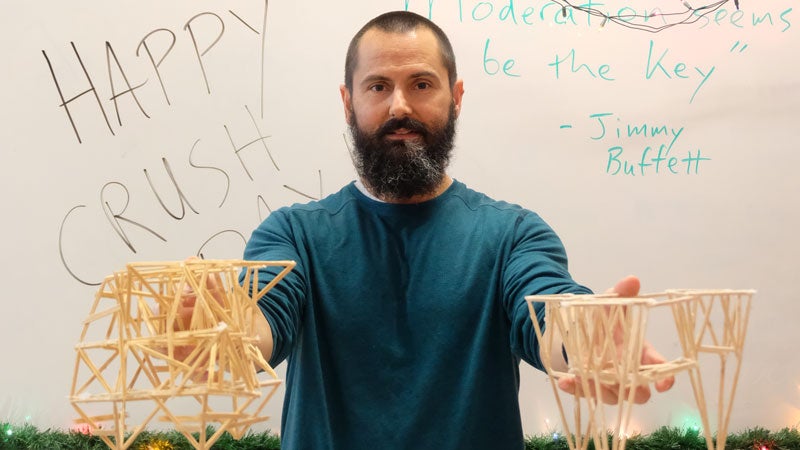
Upon immediate reaction, his students Lindsay Whatley and Caroline Robinson both agreed: “This project is not going to be possible.” Laurel had a similar thought: “It seemed impossible up front, but once I started, it began to all make sense.”
That’s just the reaction Martin is looking for—because how they parallel the thoughts of the framers who had to figure out and manage the fledgling government’s separation of powers, the balance of the government and the weight of the country 231 years ago. “The project is a physical way for the kids to process the nation-building with the stresses of it, the concept of trying to put an idea into working reality, having to work together, disagreeing on the best way to build it, and it having to carry the weight,” Martin explains. “It’s not enough just to have the concept and the product but to [also] test it.”
When he designed the project, Martin knew he needed stipulations in order to mirror the challenge of the framing of the Constitution. While the structure itself needs to have three base points, the toothpicks also have to be in groups of three, or as Martin likes to call these groupings, “bundles.” His instructions for the bundles are these:
- Can only be three base points touching the floor. A base point can be a bundle or close grouping of bundles. (Have to be able to slide a toothpick between all bundles.)
- Must be at least two toothpicks high (and weight bearing) without stacking or repetitious shapes over and over.
- Have to be able to run a triangular bundle under your lowest cross members (no toothpicks/bundle can be laid horizontally on the ground).
- Have to be able to run a toothpick between bundles (not inside a bundle, but between bundles).
- Cannot have paper spines on your bundles.
- Toothpicks CAN be broken and/or cut.
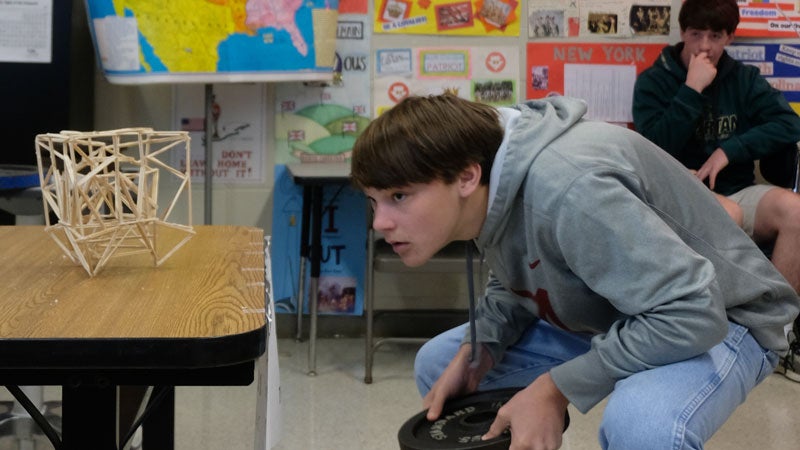 All of these restrictions regarding the toothpicks alone are enough to make a tenth grader question the possibility of the project, but when Martin pulls out past examples each year that passed the weight test with flying colors, the doubts slowly dissipate and instead turn into ideas or strategies.
All of these restrictions regarding the toothpicks alone are enough to make a tenth grader question the possibility of the project, but when Martin pulls out past examples each year that passed the weight test with flying colors, the doubts slowly dissipate and instead turn into ideas or strategies.
For Lindsay’s group, they “started building upwards, building smaller to keep it compact.” Another strategy students used involved the formations of bundles themselves. “We’re trying to make little shapes to make a bigger structure,” Catherine Taylor shared mid-project. And for Emily King, “Triangles, we made lots of triangles.” Strategies extend beyond the structure too. “Pick your group members wisely,” Andrew Bell says. “That would be my biggest piece of advice.”
Of course some students grow to be confident in their projects as more time wore on, but most worried about how the structures would hold under the stress of the weight. Emily King was “not confident, but hopeful.” However, after the infamous “Crush Day,” when all of the structures are put to the test, the students collectively released sighs of relief. “Mine turned out to be a bit of a cluster, but it passed, luckily,” Daniel Carmichael recounts.
On Crush Day, the students line up to test their structures with weight. The test not only evaluates the structure, but also a group’s willingness to go out on a ledge and jump and hopefully to land on a sturdy bed of toothpicks. There are three increments of weight: 35, 45 and 55 pounds. First the 35-pound weight is added, and if it stands, the group decides whether to add more weight and risk it collapsing for a higher grade. Martin’s rubric outlines each potential grade outcome up to 55 pounds, which makes for a perfect score. With this additional stress, Martin forces his students to think through their actions and weigh the risk with the reward.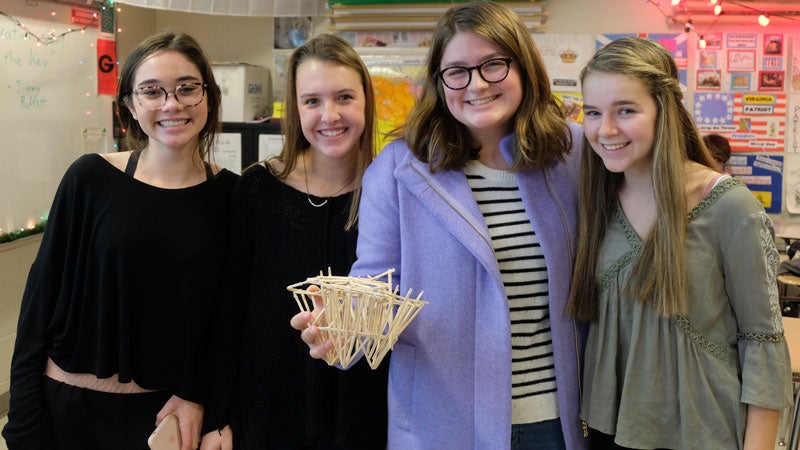
If a structure makes a perfect score, students can choose additional weight challenges for fun. That’s when you might find human weight being tested. The strongest structure to date even held Martin on multiple occasions. And the additional challenges were not uncommon this school year. After Crush Day in December, Martin recounted the results: “I’ve never had a whole class with everyone’s being so successful. First period, everyone’s held the maximum amount of weight.”
Past students remember Martin’s project for more than its stresses too. “It really taught me how to work together with a group of people even when you have fails,” junior Hughes Thomas says. “But it also teaches you how to persevere for a successful end product.” Junior Grace Carr added: “The project showed me another way of learning and helped bring the lesson of the framers to life, putting me in their shoes and making me see just how hard their job was.”
The general consensus for the project is that the building takes much more work and patience than most people would think. “While it seemed elementary, the project was significantly harder than that,” junior William Wood says. However, challenge is in the name of the project itself, and it is also what makes the project even more unique. There is no simple answer to the build, nor is there a clear-cut design. The project instead relies on the students’ creativity: an aspect that is scary at first, but that makes it much more rewarding when the structure turns out to be a success.
While the framers may not have constructed the Constitution for the United States of America out of toothpicks and Elmer’s glue, the parallels are there. Like the Toothpick Challenge, it was completed in a short amount of time with a short amount of patience but a high amount of stress. So, if the time ever comes to create a new Constitution, we can safely look to the Advanced American History students of Shane Martin for guidance with our toothpicks held high.

